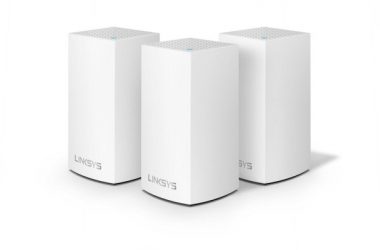
Microsoft’s Internet Explorer (IE) is used much more often than most assume, a researcher asserted.
According Devil Mountain Software, nearly 57% of the 23,0000 PCs in the company’s community-based Exo.performance.network (XPnet) run at least two browsers: IE and either Mozilla’s Firefox, Google’s Chrome, Opera Software’s Opera or Apple’s Safari for Windows.
New mining of XPnet’s data has revealed a more precise accounting of the multiple-browser phenomenon in the enterprise, said Craig Barth, the CTO at Devil Mountain.
More than 32% of the machines that Devil Mountain monitors run both IE and a version of Firefox, said Barth, making Mozilla’s browser the top No. 2 browser in corporations. Google’s Chrome is the No. 2 second browser: 18% of the systems run both IE and Chrome. Opera and Safari are far behind Firefox and Chrome, running in conjunction with IE on only 4% and 3% of the machines, respectively.
Barth argued that the numbers challenge the conventional thinking regarding browser usage share, as regularly spelled out by the likes of NetApplications.com, a California company that measures traffic to some 40,000 Web sites to determine each browser’s share of the total.
"While IE’s presence across the broader Internet may have declined in recent years, its stranglehold on enterprise IT application compatibility, development practices and in-house deployment standards remains as firm as ever," Barth wrote in a blog posted today.
"When users can install another browser, and not all can, they’re still forced to deal with IE with internal applications or sites," Barth said in an interview today. "IT forces them to use IE during the day within the company, but when they want to browse the [external] Web — if they can — they want to use another browser like Firefox or Chrome."
Because Internet metrics firms measure browser usage on only the public part of the Web, they’re not seeing the true usage trends of IE, Barth argued.
For example, NetApplications’ most recent data claimed that IE accounted for 62% of all browsers used worldwide last month, down 10% from the year before. In comparison, XPnet says nearly 80% of all PCs in business run Microsoft’s browser, with that number barely budging of late.
NetApplications agreed with Barth. "[While] we believe determining which browser is actually being used to visit Web sites is a more useful measurement than which browsers are installed & I would suspect that IE is installed on a far higher percentage of devices than our reported usage market share for IE," said Vince Vizzaccaro, executive vice president of NetApplications.
"The enterprise is a huge stronghold for Microsoft," said Barth. "Microsoft hasn’t aggressively tried to move people off IE, or even older editions of IE. They don’t have to. For their bread and butter, corporations, IE is still the dominant browser."
Barth has a point. While Microsoft has publicly urged consumers to upgrade from IE6, it has admitted it can’t and won’t push businesses as hard. The nearly-nine-year-old browser has had more than its share of vulnerabilities, including high-profile Chinese attacks against Google. "While we recommend Internet Explorer 8 to all customers, we understand we have a number of corporate customers for whom broad deployment of new technologies across their desktops requires more planning" a Microsoft spokeswoman said earlier this week.
The XPnet data also shows rapid adoption of Google’s Chrome as a second browser, Barth added. "Chrome is going gangbusters," he said, noting that 24% of all the machines monitored run Chrome during a typical workday. (That 24% includes the 18% who run both IE and Chrome, Barth added.)
On Chrome at least, XPnet and NetApplications agree: The latter has tracked a doubling of the Google browser’s share in the last six months.
In comparison, Barth called Firefox’s usage within XPnet as "essentially flat" for the last several months. "Firefox is the one to worry," Barth said today, repeating comments he made last month when he said, "If anyone is going to get their lunch eaten, it’s Firefox."
Users who want to contribute to Xpnet’s data collective can do so by downloading and installing a small utility, DMS Clarity Tracker Agent, from Devil Mountain’s site.
Since many enterprise users run multiple browsers, IE’s use is under-reported





